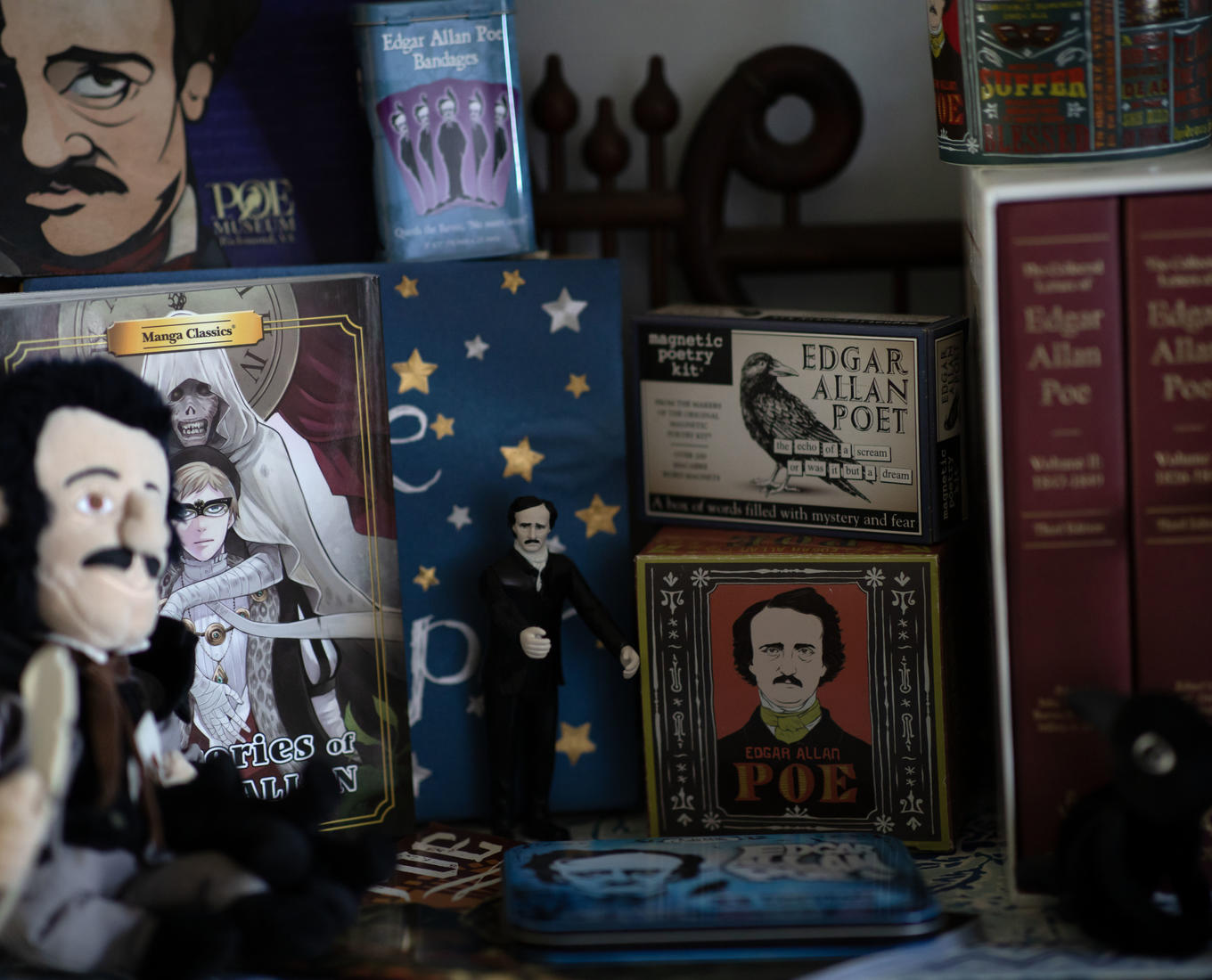So, you have the germ of an idea for a horror story. The narrator is mad, the setting unsettling, and it has teeth — not in the sense that the tone of the story is biting but rather that bicuspids make an appearance.
Distinguished Professor of Arts and Humanities Susan Elizabeth Sweeney is the only scholar to have twice won the Poe Studies Association’s James W. Gargano Award and has also been named an Honorary Member, the organization's highest honor. Drawing from Poe's short stories, essays ("How to Write a Blackwood Article," "The Philosophy of Composition") and his review of Nathaniel Hawthorne's "Twice-Told Tales," Sweeney offers this advice:
- Open with an unreliable first-person narrator in denial even in the act of confessing: "True! — nervous —very, very dreadfully nervous I had been and am; but why will you say that I am mad?" says the villain of "The Tell-Tale Heart."
- Add obsession. Make sure that the narrator is preoccupied with something, preferably a body part, such as a woman's teeth ("Berenice"), an old man's blind eye ("Tell-Tale Heart"), a woman's enormous black eyes ("Ligeia"), a human heart ("Tell-Tale Heart") or a cat's eye ("The Black Cat").
- Choose a dark, confined, even claustrophobic setting. Think ancient mansion, overspread with fungus, as in "The Fall of the House of Usher", a locked room ("The Murders in the Rue Morgue"), a barricaded castle during an epidemic (The Masque of the Red Death"), a prison cell ("The Pit and the Pendulum"), a darkened bedroom ("The Tell-Tale Heart"), or a grave ("The Premature Burial").
- Add mysterious natural phenomena: a fire ("The Black Cat"), a whirlwind and a storm ("The Fall of the House of Usher"), a whirlpool ("A Descent into the Maelström").
- Let the second half of the story mirror the first. Sweeney called this "a disturbing echo," citing the bookend constructions of "Morella," "Ligeia," "The Tell-Tale Heart," and "The Black Cat" as examples.
- Keep your eyes on the prize. Make sure that every word leads to the impression you want to leave the reader with after the last line.
- Shift between describing weird sights and sounds. Better still, show the narrator straining to make out a shape or recognize a faint sound, as in "The Fall of the House of Usher."
- Go for bold. "Construct rhythmic, sonorous, alliterative, onomatopoeic sentences with lots of intensifiers and superlatives, a series of adjectives (especially "peculiar") and exclamation points," Sweeney says.
- Strike a foreboding note. "End with a disturbing implication that the dead do not stay buried," Sweeney says. "This is especially effective when you set things up so that the reader is led to draw that conclusion."
- You got this. In the preface to his "Tales of the Grotesque and Arabesque," Poe noted that "terror is not of Germany" — referring to the settings and plot devices of German Gothicism — "but of the soul." In other words, write about what truly scares you.
